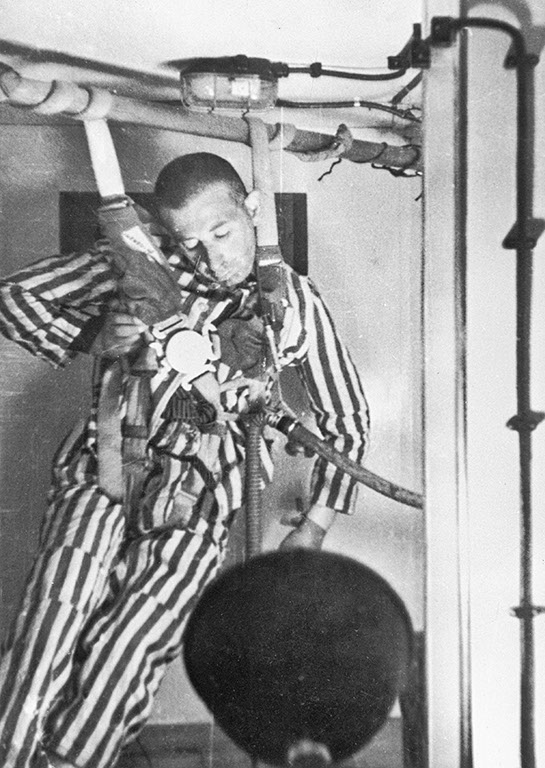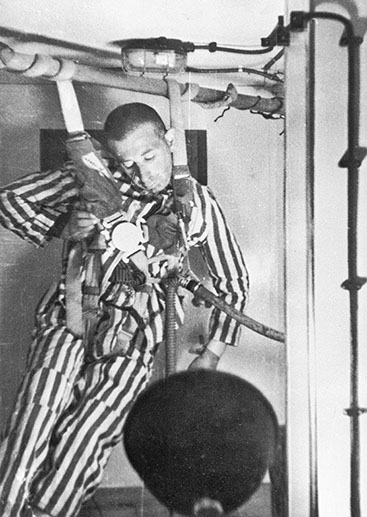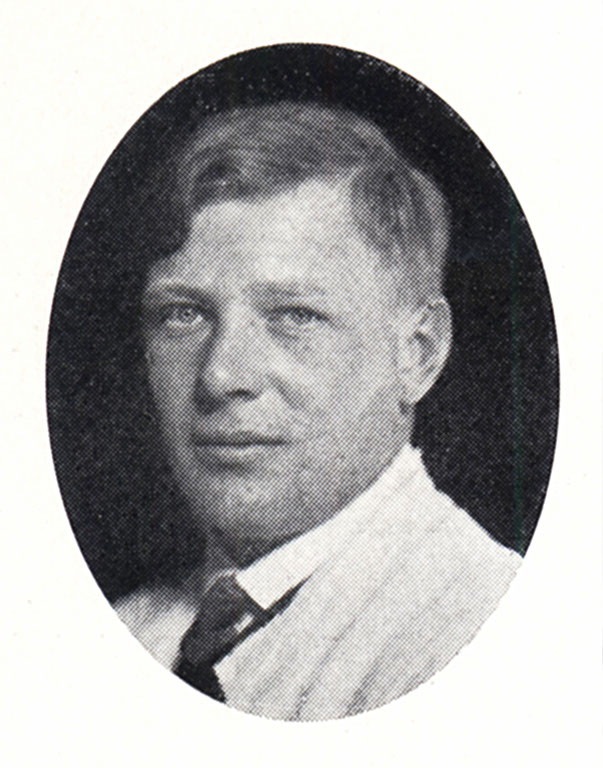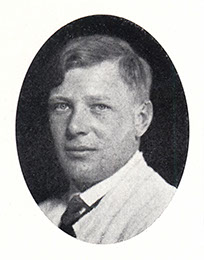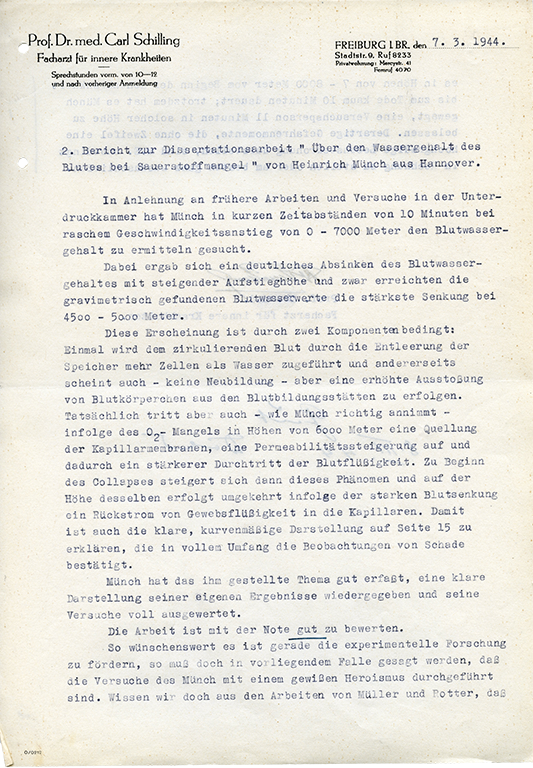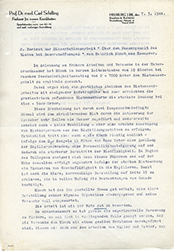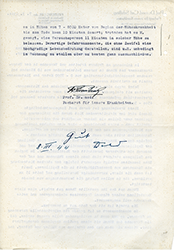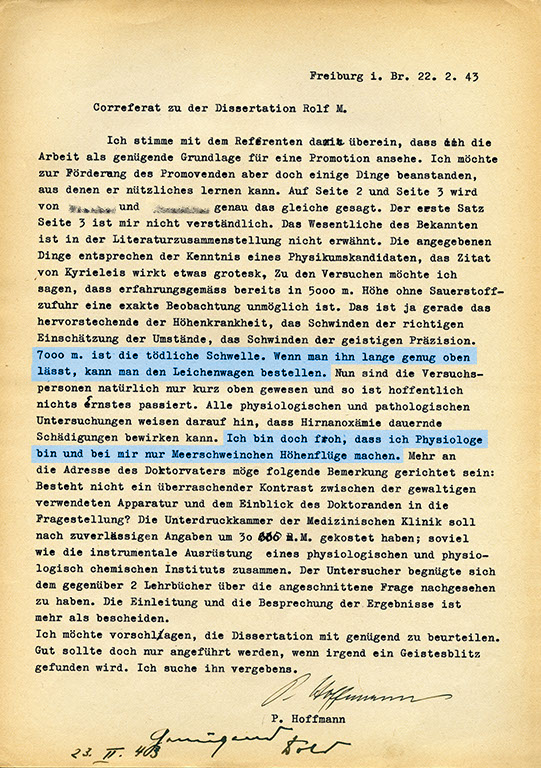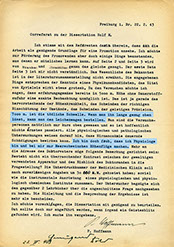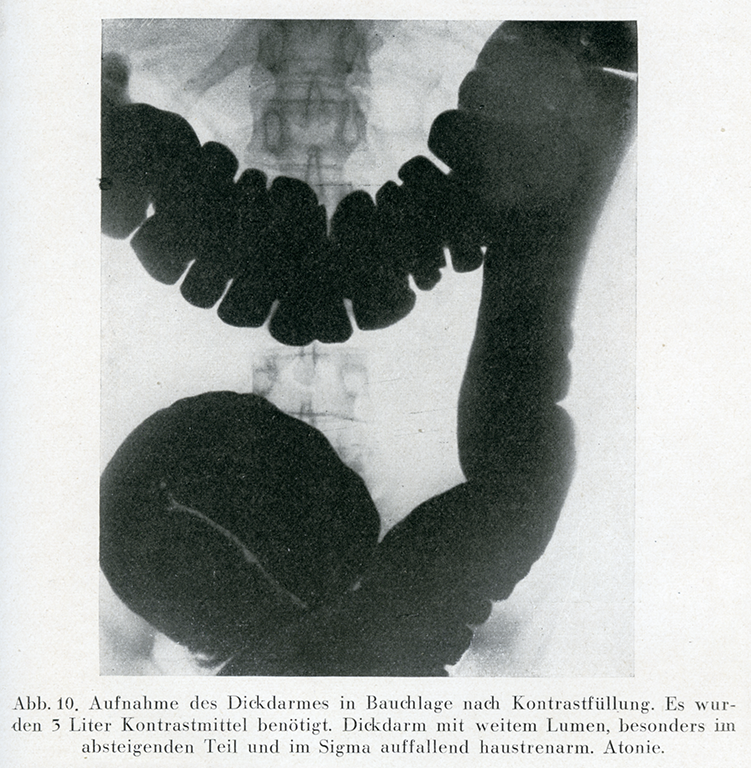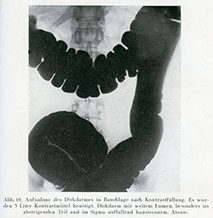
Human Experimentation
The well-documented and -researched examples of “unbridled science” in the National Socialist state include human experiments in the field of aviation medicine conducted in the Dachau concentration camp. The defendants in the Nuremberg Doctors’ Trial included Dr. med. habil. Georg August Weltz, a radiologist and X-ray physiologist whose primary research interests centred on aviation medicine. Weltz was a member of the German Radiological Society, had been on the Society’s Advisory Council since 1937, and was the president of the first “Greater German Radiology Congress” in Munich in 1938.
Weltz taught the physiology of work, sports, and war at the University of Munich from 1940 to 1945. He was tried at the Nuremberg Doctors’ Trial, along with Siegfried Ruff and Hans-Wolfgang Romberg, for their experiments on hypothermia and with high-altitude and pressure chambers. All three were acquitted. SS-Hauptsturmführer Dr. Sigmund Rascher carried out the often deadly human experiments. The pressure chamber experiments were performed in the Dachau concentration camp between March and August 1942 in cooperation with the SS, the Luftwaffe, and the university research institute for aviation medicine at the University of Munich, the director of which was Prof. Dr. Weltz. About 200 prisoners were involved in the experiments, of whom between 70 and 80 died during the trials. The experiments partially took into account the death of the experimental subject, generating a meticulous record of the dying process.
Weltz’s own research interests focused in 1942 on the effects of cold. He published an essay in 1942 entitled, “Heating after life-threatening cooling. (on the basis of a presentation by Oberstabsarzt Weltz at the Luftwaffe’s “Maritime and Winter Emergencies” conference on 26 October 1942).” Dr. Werner Knothe, chairman of the German Radiological Society at the time, also took part in this “Maritime and Winter Emergencies” conference, where Sigmund Rascher presented research results that he had gleaned from deadly human experiments.
Aviation-related medical research was also conducted at other universities. Even dissertations were based on human experiments that were in no way harmless, as is clear from excerpts from dissertation evaluations from 1943 and 1944. The ethical brutalisation that took place as the war progressed is also documented in a decree by the Reich Ministry of Science, dated 24 August 1941, according to which the Ministry had to intervene because requests from university researchers for “prisoners of war as specimens for scientific work” threatened to overwhelm the Wehrmacht’s administration.
Georg August Weltz,
German Museum of Radiology, photo 1928
Dachau concentration camp, low-pressure experiments on prisoners
((bpk / Siegmund Rascher)) (bpk 30019031)
Life-threatening human experiments in aviation medicine and physiology at universities. Prof. Dr. Carl Schilling [DRG member] dated 7 March 1944. 2. Report on dissertation (...) by Heinrich M. from Hanover.
Life-threatening human experiments in aviation medicine and physiology at universities.
X-ray image of the large intestine; hunger experiments were conducted in Hamburg on Soviet prisoners of war. (in: Berning, Heinrich: Die Dystrophie, Stuttgart 1949, p. 45, Fig. 10)
Menu
Deutsche Röntgengesellschaft e.V. © 2018
| Impressum | Datenschutz
